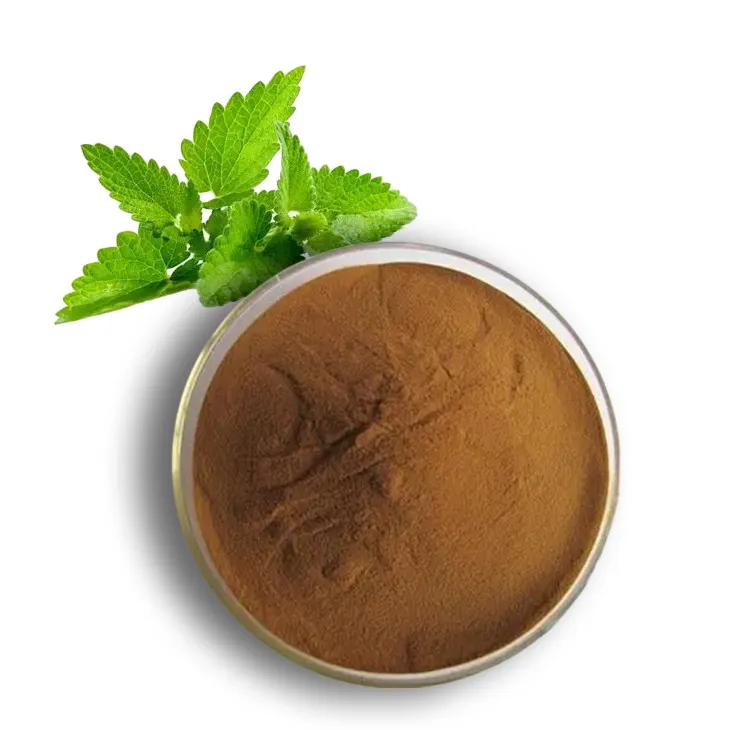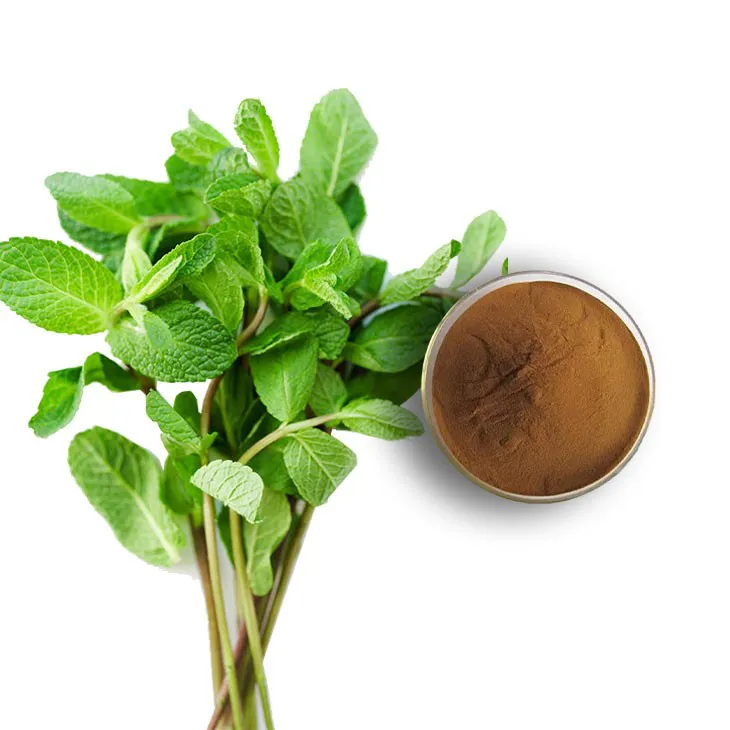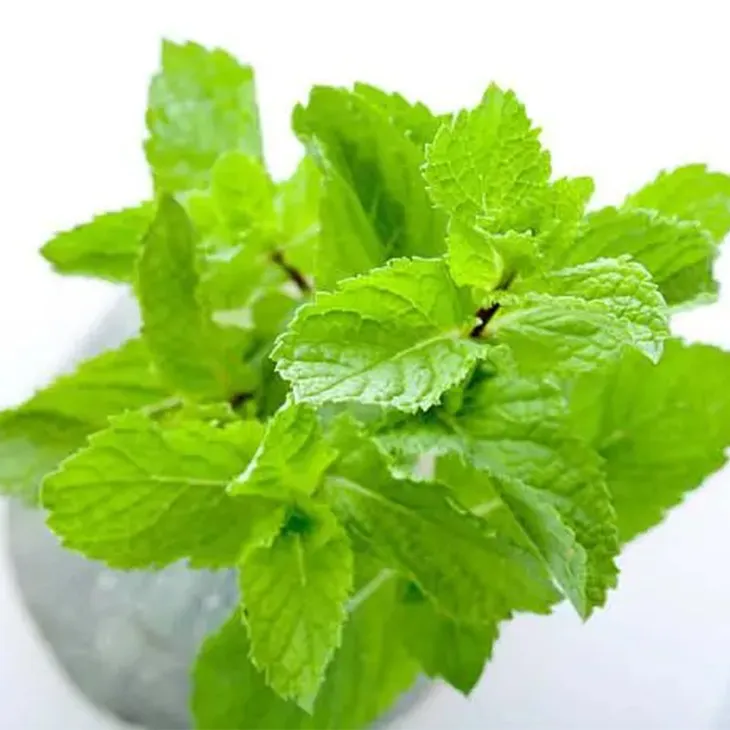- 0086-571-85302990
- sales@greenskybio.com
The Best Sources of Natural Peppermint Extract Powder.
2024-11-29

Introduction
Peppermint Extract Powder has emerged as a highly sought - after ingredient in various industries, from food and beverage to cosmetics and traditional medicine. Its refreshing flavor, reminiscent of cool mint, adds a delightful zing to products. Moreover, it is associated with numerous health benefits, such as aiding digestion, relieving headaches, and providing a sense of relaxation. In this article, we will explore the best sources of high - quality, pure Peppermint Extract Powder that are sustainably sourced from around the world.

1. Native Peppermint Growing Regions
Peppermint is native to certain regions, and these areas often produce some of the finest Peppermint Extract Powder.
Europe
England: England has a long - standing tradition of peppermint cultivation. The cool and damp climate in parts of England provides ideal conditions for peppermint to thrive. Peppermint grown in England is known for its rich flavor profile. The traditional farming methods passed down through generations ensure that the peppermint is carefully cultivated. English peppermint is often used in high - end culinary products, as well as in herbal remedies.
France: France is another European country with a significant contribution to the peppermint industry. The French countryside, with its fertile soils and temperate climate, is home to peppermint farms. French - grown peppermint is prized for its delicate aroma and is used in a variety of products, including perfumes, as well as in food products like candies and pastries.
North America
The United States: In the United States, the state of Oregon and parts of the Midwest are known for their peppermint production. Oregon, in particular, has a climate that suits peppermint well. The vast fields of peppermint in this region produce large quantities of high - quality plants. American - grown peppermint is used extensively in the production of chewing gums, toothpastes, and various herbal supplements. The use of modern agricultural techniques combined with sustainable farming practices ensures a consistent supply of peppermint for extraction.

2. Organic Farms
Organic farms play a crucial role in providing pure peppermint extract powder.
- Soil Quality: Organic farms focus on maintaining high - quality soil. They use natural fertilizers such as compost and manure, which enrich the soil and contribute to the healthy growth of peppermint plants. This results in peppermint with a more robust flavor and higher nutrient content. For example, some organic farms in Italy use traditional composting methods that have been passed down for centuries, resulting in peppermint plants that are full of flavor.
- No Chemical Pesticides: One of the main advantages of organic peppermint farms is the absence of chemical pesticides. This not only makes the final product safer for consumption but also ensures that the natural ecosystem around the farm remains intact. In New Zealand, organic peppermint farms are home to a variety of beneficial insects and wildlife. The absence of pesticides means that the peppermint plants are less likely to be contaminated with harmful chemicals, leading to a purer extract powder.
- Sustainable Practices: Organic farms are often more focused on sustainable practices. They may use water - conservation techniques, such as drip irrigation, and engage in crop rotation to maintain soil fertility. In India, some organic peppermint farms use ancient water - harvesting techniques to ensure that water is used efficiently. These sustainable practices contribute to the long - term availability of high - quality peppermint, and the resulting extract powder is both pure and environmentally friendly.

3. High - Altitude Plantations
Peppermint grown at high altitudes can have unique qualities that make it an excellent source for extract powder.
- Intense Flavor: High - altitude plantations, such as those in the Andes Mountains in South America, experience cooler temperatures and more intense sunlight. These conditions can cause the peppermint plants to develop a more intense flavor. The plants are forced to adapt to the harsher environment, resulting in a concentration of the essential oils that give peppermint its characteristic taste and aroma.
- Purity: The relatively isolated nature of high - altitude plantations can contribute to the purity of the peppermint. There is less pollution and fewer contaminants in these areas compared to lower - lying regions. In the Himalayan regions, for example, peppermint grown at high altitudes is less likely to be exposed to industrial pollutants. This results in a purer extract powder that is highly valued in the market.
- Slow Growth: Peppermint at high altitudes often grows more slowly due to the challenging environmental conditions. This slow growth allows the plants to develop more complex flavors and a higher concentration of beneficial compounds. The long - growing season in some high - altitude regions, like parts of the Rocky Mountains in the United States, means that the peppermint has more time to accumulate essential oils and other nutrients.
4. Fair - Trade Sourcing
Fair - trade sourcing is an important aspect when considering the best sources of peppermint extract powder.
- Benefiting Local Communities: When peppermint is sourced through fair - trade channels, it ensures that local farmers and communities in the growing regions are fairly compensated. For example, in African countries like Morocco where peppermint is grown, fair - trade initiatives have helped improve the living standards of small - scale farmers. These farmers are able to invest in better farming equipment and education for their children, which in turn promotes the sustainable growth of peppermint cultivation.
- Quality Assurance: Fair - trade organizations often have strict quality control measures in place. They ensure that the peppermint is grown according to certain standards, which can include proper harvesting times and methods. This helps to maintain the quality of the peppermint extract powder. In countries like Guatemala, fair - trade peppermint producers are required to follow specific guidelines for harvesting and processing, resulting in a consistent and high - quality product.
- Environmental Stewardship: Fair - trade also encourages environmental stewardship. Many fair - trade peppermint farms are required to follow sustainable farming practices, such as reducing water usage and protecting natural habitats. In Madagascar, fair - trade peppermint farms are involved in reforestation projects, which not only benefits the environment but also contributes to the overall quality of the peppermint grown in the region.
5. Traditional Medicinal Herb Gardens
Traditional medicinal herb gardens can be a great source of pure peppermint extract powder.
- Heritage Varieties: These gardens often preserve heritage varieties of peppermint that may have unique flavor profiles or higher concentrations of medicinal compounds. In China, traditional medicinal herb gardens have been cultivating peppermint for centuries. Some of the varieties grown in these gardens are known for their strong anti - inflammatory properties, which are passed on to the extract powder.
- Careful Cultivation: In traditional herb gardens, peppermint is cultivated with great care. The gardeners have in - depth knowledge of the plant's needs and use traditional methods of cultivation. For example, in Ayurvedic herb gardens in India, peppermint is grown using ancient techniques that involve specific watering schedules and soil amendments. This careful cultivation results in high - quality peppermint that can be used to produce excellent extract powder.
- Non - Commercial Focus: Since these gardens are often focused on traditional medicine rather than mass commercial production, the peppermint is not subjected to the same intensive chemical treatments as in large - scale commercial farms. This can lead to a more natural and pure extract powder. In some European traditional herb gardens, the peppermint is grown organically and used mainly for making herbal tinctures and remedies, ensuring a high - quality end product.
Conclusion
The best sources of natural peppermint extract powder are diverse and come from different corners of the world. Whether it is from native growing regions with their long - standing traditions, organic farms with their sustainable and pure practices, high - altitude plantations with their unique flavor profiles, fair - trade sourced peppermint that benefits local communities and the environment, or traditional medicinal herb gardens with their heritage varieties and careful cultivation, each source has its own merits. By understanding these sources, consumers and producers alike can make more informed decisions when it comes to choosing high - quality, pure peppermint extract powder.
FAQ:
Question 1: What are the main regions where high - quality peppermint is grown?
Peppermint is mainly grown in regions with suitable climates such as the United States (particularly in Oregon and Washington), India, and some parts of Europe like France. These regions offer the right temperature, soil conditions, and sunlight for peppermint to thrive, which in turn results in high - quality plants that can be used to produce excellent peppermint extract powder.
Question 2: How can one ensure the purity of peppermint extract powder?
To ensure the purity of peppermint extract powder, look for products that are certified organic. This means that they are grown without the use of synthetic pesticides or fertilizers. Also, check for third - party testing. Reputable brands often have their products tested by independent laboratories for purity and quality. Additionally, a pure peppermint extract powder should have a strong, characteristic minty smell and a clean, fresh taste without any off - flavors.
Question 3: Are there any sustainable farming practices for peppermint?
Yes, there are sustainable farming practices for peppermint. Some farmers use crop rotation to maintain soil fertility. They also practice water conservation techniques, such as drip irrigation. Organic farming methods are also considered sustainable as they avoid the use of harmful chemicals. Additionally, some farms promote biodiversity by allowing native plants to grow alongside peppermint, which helps to create a more balanced ecosystem.
Question 4: What are the health benefits of using high - quality peppermint extract powder?
High - quality peppermint extract powder has several health benefits. It can aid in digestion by relaxing the muscles of the gastrointestinal tract. It may also help relieve headaches and migraines due to its soothing properties. Peppermint has antibacterial and antifungal properties, which can be beneficial for oral health. Additionally, it can provide a sense of relaxation and stress relief when consumed or used in aromatherapy.
Question 5: How is peppermint extract powder produced?
Peppermint extract powder is typically produced from the leaves of the peppermint plant. First, the peppermint leaves are harvested. Then, they are dried to preserve their essential oils and flavor compounds. After drying, the leaves are often steam - distilled to extract the essential oils. These oils can then be further processed into a powder form through techniques such as spray - drying or freeze - drying, which helps to concentrate the active ingredients and make it easier to use in various products.
Related literature
- Peppermint: A Review of its Botany, History, and Medicinal Properties"
- "The Cultivation and Processing of Peppermint for Extract Production"
- "Sustainable Farming of Peppermint: Current Practices and Future Prospects"
- ▶ Hesperidin
- ▶ Citrus Bioflavonoids
- ▶ Plant Extract
- ▶ lycopene
- ▶ Diosmin
- ▶ Grape seed extract
- ▶ Sea buckthorn Juice Powder
- ▶ Fruit Juice Powder
- ▶ Hops Extract
- ▶ Artichoke Extract
- ▶ Mushroom extract
- ▶ Astaxanthin
- ▶ Green Tea Extract
- ▶ Curcumin
- ▶ Horse Chestnut Extract
- ▶ Other Product
- ▶ Boswellia Serrata Extract
- ▶ Resveratrol
- ▶ Marigold Extract
- ▶ Grape Leaf Extract
- ▶ New Product
- ▶ Aminolevulinic acid
- ▶ Cranberry Extract
- ▶ Red Yeast Rice
- ▶ Red Wine Extract
-
American Ginseng Root Extract
2024-11-29
-
Genistein
2024-11-29
-
Clove Powder
2024-11-29
-
Green coffee bean Extract
2024-11-29
-
Lemon Balm Extract
2024-11-29
-
Chasteberry Extract
2024-11-29
-
Reishi mushroom extract
2024-11-29
-
Maca Extract
2024-11-29
-
Eucommia Ulmoides Extract
2024-11-29
-
Sea buckthorn oil
2024-11-29





















